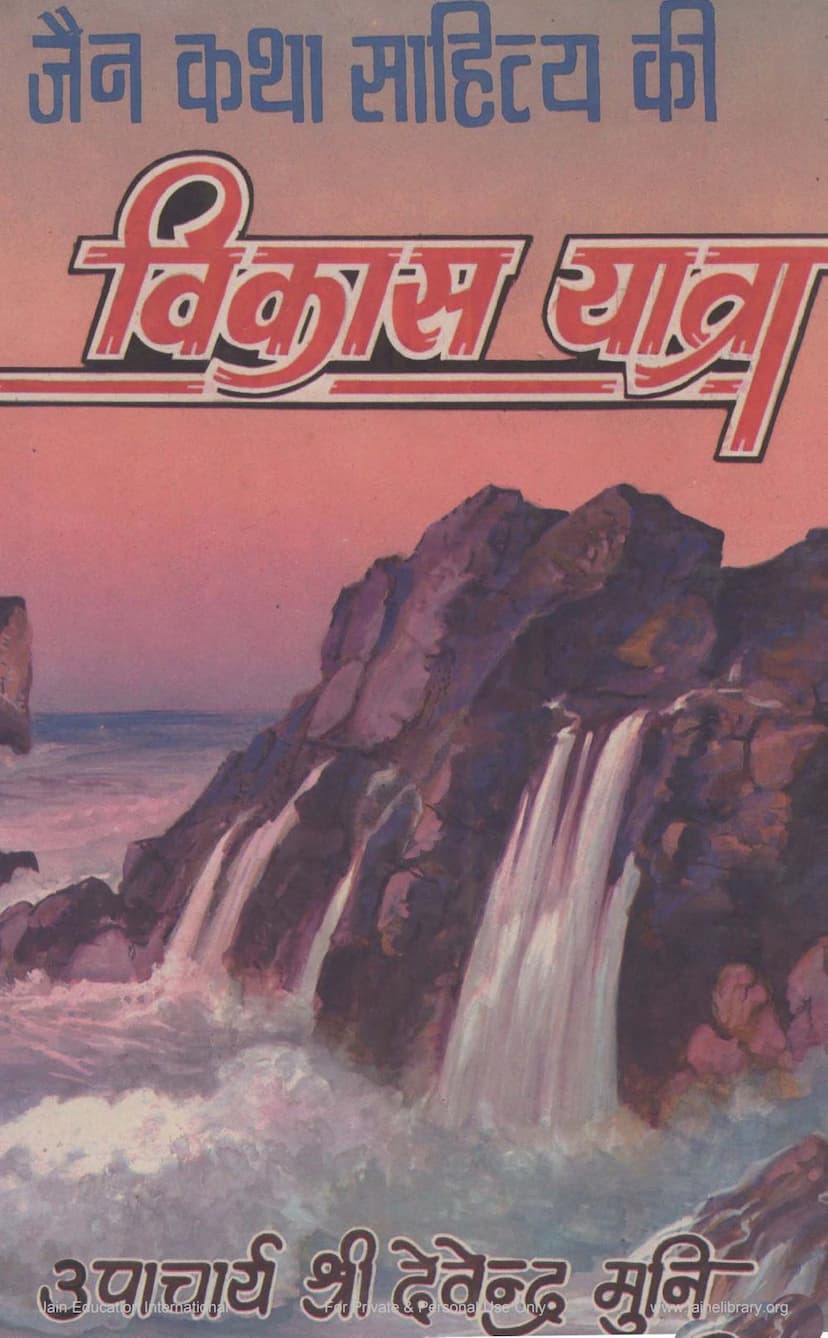Jain Katha Sahitya Ki Vikas Yatra
Added to library: September 2, 2025

Summary
This book, Jain Katha Sahitya ki Vikas Yatra (The Evolutionary Journey of Jain Narrative Literature) by Upacharya Shri Devendramuni, published by Tarak Guru Jain Granthalay, is a comprehensive exploration of the rich tradition of narrative literature within Jainism.
The book highlights the inherent appeal and widespread acceptance of stories ("katha") due to their fluidity, effectiveness, and universal resonance. It emphasizes that Jain literature, a significant stream within Indian literature, is particularly rich and well-developed in its various forms of narrative.
From the ancient Āgama literature to commentaries, glosses, and biographies, thousands of Jain stories are presented as colorful flowers in a garden, illuminating themes of religion, ethics, conduct, detachment, art, and entertainment with remarkable ease and clarity. These stories, found in Prakrit, Sanskrit, Apabhramsha, Gujarati, and Rajasthani languages, are numerous and have the power to provide new direction and cultural support to life.
The author, Upacharya Shri Devendramuni, a profound scholar and erudite exponent of Jain literature, has based this study on Jain narrative literature while encompassing the broader spectrum of Indian literature. He presents a meticulously researched, authentic, and enlightening account of the developmental journey of narrative literature.
The book is structured into three main sections:
- Volume 1: Overview of Prakrit Jain Narrative Literature, Apabhramsha Jain Narrative Literature, and Hindi Jain Narratives and the Jain Narratives of Upadhyayashri Pushkarmuniji.
- Volume 2: Stories from Jain Āgamas, Stories of Exalted Personalities (Uttam Purush), Stories of Ascetics (Shraman), Ascetic Women (Shramani), Lay Disciples (Shramanoapasak), and Various Narratives.
- Volume 3: Post-Āgama Narrative Literature (with a focus on Upamiti Bhava Prapancha Katha by Siddharshi: Life and Work).
The book emphasizes that stories are not merely for entertainment; they are vehicles for conveying human sensibility, aspirations, cultural values, and moral guidance. The author traces the origin of narratives back to the Kulkara era preceding Lord Rishabhadeva, highlighting the imaginative and creative capabilities of ancient humans through these narratives.
The core contribution of Jain narratives to the broader stream of Indian storytelling is significant, acting as a pure source that has nourished and quenched the thirst of countless beings for ages. These narratives seamlessly blend the philosophical with the practical, the ideal with the rebellious spirit against doubt and disbelief, and the realms of "bhava" (emotion/spirit) and "karma" (action).
The book further delves into the classification of Jain narratives based on subject matter, style, characters, and language, categorizing them into religious, historical, social, didactic, entertaining, supernatural, ethical, animal-related, epic, curse-and-blessing-related, occupational, miscellaneous, travel-related, guru-disciple, deity-related, omen-related, mantra-tantra, intelligence-testing, and fictional narratives.
Ultimately, "Jain Katha Sahitya ki Vikas Yatra" serves as a vital resource for understanding the evolution and enduring influence of Jain narrative literature, not only within Jainism but also on the broader landscape of Indian and world literature. It showcases the depth, breadth, and didactic power of Jain storytelling.